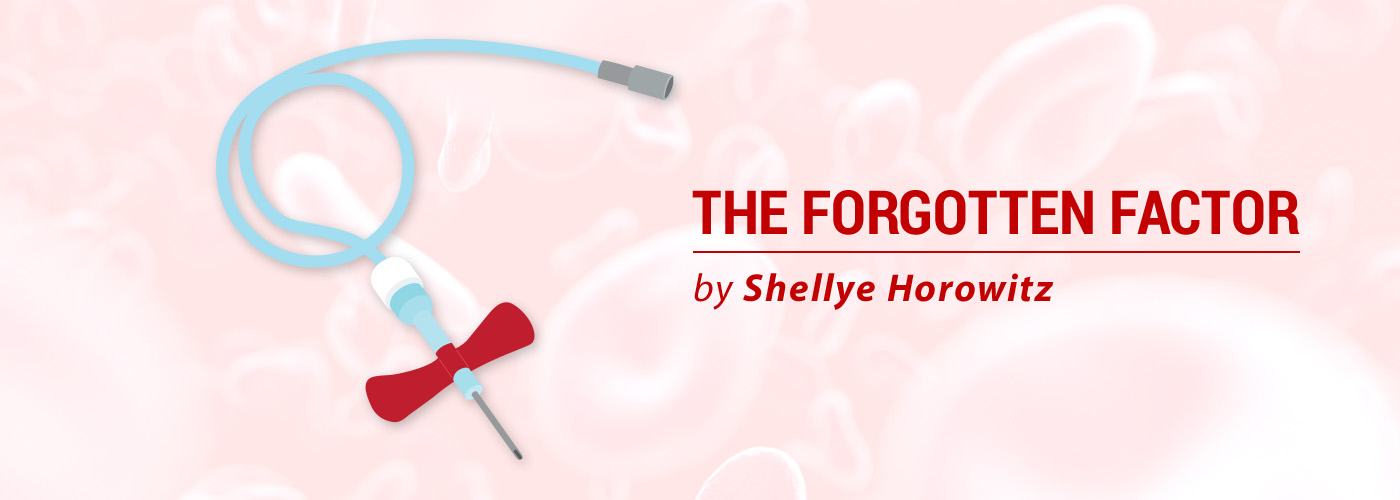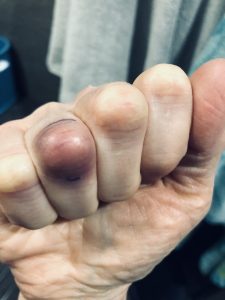How to Help Your Doctor Take Hemophilia Seriously

Last week, I met a new local hematologist. He is not my main hemophilia doctor, but with my hemophilia treatment center eight hours away, it helps to have a local connection. He is a hematologist/oncologist who specializes in cancer treatment and knows very little about hemophilia.
As I prepared for the appointment, I realized how nervous I was. I wanted this new doctor to be an ally. I needed him to be. The last doctor I saw at the same practice told me it was a shame to waste expensive factor products on a woman who had 20% of her own factor. I had to explain that men with severe hemophilia were brought to 100% before major surgeries, and women who have hemophilia should be also. This interaction left me without local support for several years. I was hopeful for a different experience this time.
While it is unfortunate that women with hemophilia often have to advocate more to access the treatment they need, it is a reality that we contend with, for now. Ideally, women would find empathy and immediate access to care when they approach medical professionals for treatment. I am hopeful that one day this will be the case. For now, women must continue to break down misconceptions that only men can have hemophilia and women do not need treatment.
Dressing for success
I learned years ago that I must treat an appointment with a new doctor like a job interview. I have one opportunity to make a first impression, and it is critical that it goes well. Additionally, I may only have 5-10 minutes of time with a medical professional that could chart the course of our future working relationship. As such, I always dress up. While I would rather wear my jeans or yoga pants, I do not. I dress in business casual. Always. This does affect the way I am treated when medical professionals enter the room.
Bring data and evidence
The second thing I do is bury the medical professional in data and evidence of my bleeding issues. There are many things that can be shared. Some of the information I have found useful to bring includes:
- Medical records: I bring a copy of the DNA testing that shows my hemophilia mutation. I also bring copies of factor level tests that show my consistently low levels over time.
- Photographs of bleeds: This is by far the most powerful information I share with providers. When I say I have had joint bleeds, they may not picture the reality I deal with. When I show them photos, it allows the provider to better understand. I also show photos of cuts that wouldn’t heal and of significant bruising. Some women find it valuable to take photos of any and all bleeds that can be photographed. I save them to a folder on my phone, and they are available as needed.
- Bleed/pain journal: I have found it helpful to bring a journal of my bleeding events that includes a pain journal. When sharing information about pain, I establish a common pain experience with the provider, so they understand the level of pain I am referring to. Without this common pain experience, misunderstandings may occur, as my “2” may be the same as a “6” for the provider. Pain is relative and subjective and must be clarified.
- Pictorial blood loss assessment chart scores: These charts do their best to quantify blood loss during menstruation. I always thought I had a light period until I filled one of these out almost three years ago. My gynecologist told me that I lost as much blood in 24-26 hours as most women lose in a week. This information was helpful when I was making the decision to have a hysterectomy.
- Medical research: I bring articles from peer-reviewed medical journals that are specific to my hemophilia mutation. I find it helpful to present a medical professional with mutation-specific research. This might help to explain the differences between bleeding genotype and bleeding phenotype, and also may be valuable in the development of a treatment plan. Not all mutations have a plethora of research available. I have found the research on my mutation to be incredibly valuable in explaining the amount of bleeding I have. My providers were better able to understand my bleeding when they had the science to explain what was happening. I wish I had this information earlier in my life. I would have loved to provide it to the doctors who insisted women cannot get hemophilia and that my bleeds were in my head!
Thankfully, my new doctor said I was the hemophilia expert and he wanted to learn! If your doctor does not take your bleeding seriously, you may need to consider alternative care options. You deserve treatment. There are professionals who will support you.
***
Note: Hemophilia News Today is strictly a news and information website about the disease. It does not provide medical advice, diagnosis, or treatment. This content is not intended to be a substitute for professional medical advice, diagnosis, or treatment. Always seek the advice of your physician or another qualified health provider with any questions you may have regarding a medical condition. Never disregard professional medical advice or delay in seeking it because of something you have read on this website. The opinions expressed in this column are not those of Hemophilia News Today or its parent company, Bionews Services, and are intended to spark discussion about issues pertaining to hemophilia.








Leave a comment
Fill in the required fields to post. Your email address will not be published.